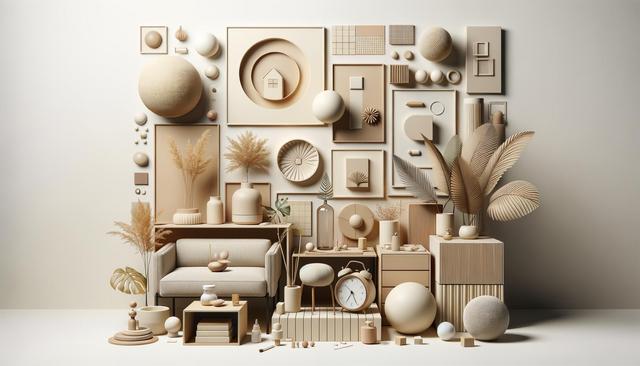Start Small and Stay Consistent
When it comes to decluttering, the process can feel overwhelming—especially if you try to take on everything at once. One of the most effective strategies is to start small. Focus on a single drawer, shelf, or corner of a room. Consistency is more important than intensity. Instead of dedicating one exhausting day to decluttering your entire home, spend 15 to 30 minutes a day tackling one area. This approach not only prevents burnout but also allows you to build momentum over time.
Try starting with these manageable tasks:
- Clear out your wallet or purse
- Sort through your bedside table
- Declutter a single kitchen drawer
- Review one category of clothing (e.g., socks, t-shirts)
By focusing on small wins, you’ll create a sense of accomplishment that encourages long-term habits, making minimalism a sustainable part of your lifestyle.
Define Your Essentials
A central principle of minimalism is keeping only what adds value to your life. To do this effectively, you need to define what “essential” means for you. Take time to assess your belongings. Ask yourself whether each item serves a purpose, brings joy, or supports your current lifestyle. If the answer is no, it may be time to let it go.
Here are a few helpful questions to guide your decision-making:
- Have I used this in the past six months?
- Would I buy this again today?
- Does this align with the person I am or want to become?
Remember, essentials will look different for everyone. A minimalist lifestyle doesn’t require owning the bare minimum. It’s about intentionality and reducing excess so you can focus on what truly matters to you.
Use the One-In, One-Out Rule
Maintaining a clutter-free space requires ongoing effort. One helpful technique to prevent accumulation is the one-in, one-out rule. For every new item you bring into your home, remove one existing item. This rule creates a balance and encourages thoughtful purchases.
Whether it’s clothing, kitchen gadgets, or home décor, applying this rule keeps your space from becoming overcrowded. It also fosters mindfulness in your shopping habits. Before adding something new, ask yourself whether it truly fills a gap or simply adds to the clutter.
Practical ways to apply this rule include:
- Donating an old shirt when buying a new one
- Recycling an unused item when upgrading your electronics
- Letting go of duplicate tools when receiving a new one
Over time, this habit can shift your mindset from accumulation to intentional living.
Organize by Category, Not Location
Another minimalist decluttering method involves organizing by category rather than by room. This strategy allows you to see the full extent of what you own in a specific category, making it easier to make informed decisions. For example, instead of tidying your bedroom, gather all your clothing from every room and sort through it at once.
Common categories to consider include:
- Clothing
- Books and magazines
- Kitchen tools and gadgets
- Office supplies
- Sentimental items
By addressing each category as a whole, you avoid duplicating items in different areas and gain better control over your possessions. This method can feel more thorough and less repetitive than going room by room.
Create a Clutter-Free Maintenance Routine
Once you’ve decluttered your space, the next step is maintaining it. Creating a simple routine helps prevent clutter from creeping back in. This doesn’t need to be time-consuming. A few minutes each day or a weekly check-in can make a significant difference.
Ideas for maintenance routines include:
- Spending 10 minutes every night tidying up common areas
- Doing a weekly review of items that may no longer serve you
- Setting a monthly calendar reminder to donate unused items
Additionally, be mindful of what you allow into your space. Whether it’s physical items, digital clutter, or commitments that drain your energy, minimalism applies to more than just belongings. With a consistent routine and a minimalist mindset, your environment can remain peaceful and purposeful.
Conclusion: Embrace Simplicity for Lasting Impact
Minimalist decluttering isn’t about sacrificing comfort—it’s about creating a space that supports your well-being and priorities. By starting small, focusing on essentials, and building sustainable habits, you can gradually transform your environment into one that brings clarity and peace. Over time, these changes can have a lasting impact not just on your home, but on your mindset and daily life. Start with one area, take it at your own pace, and enjoy the benefits of a more intentional, simplified way of living.






